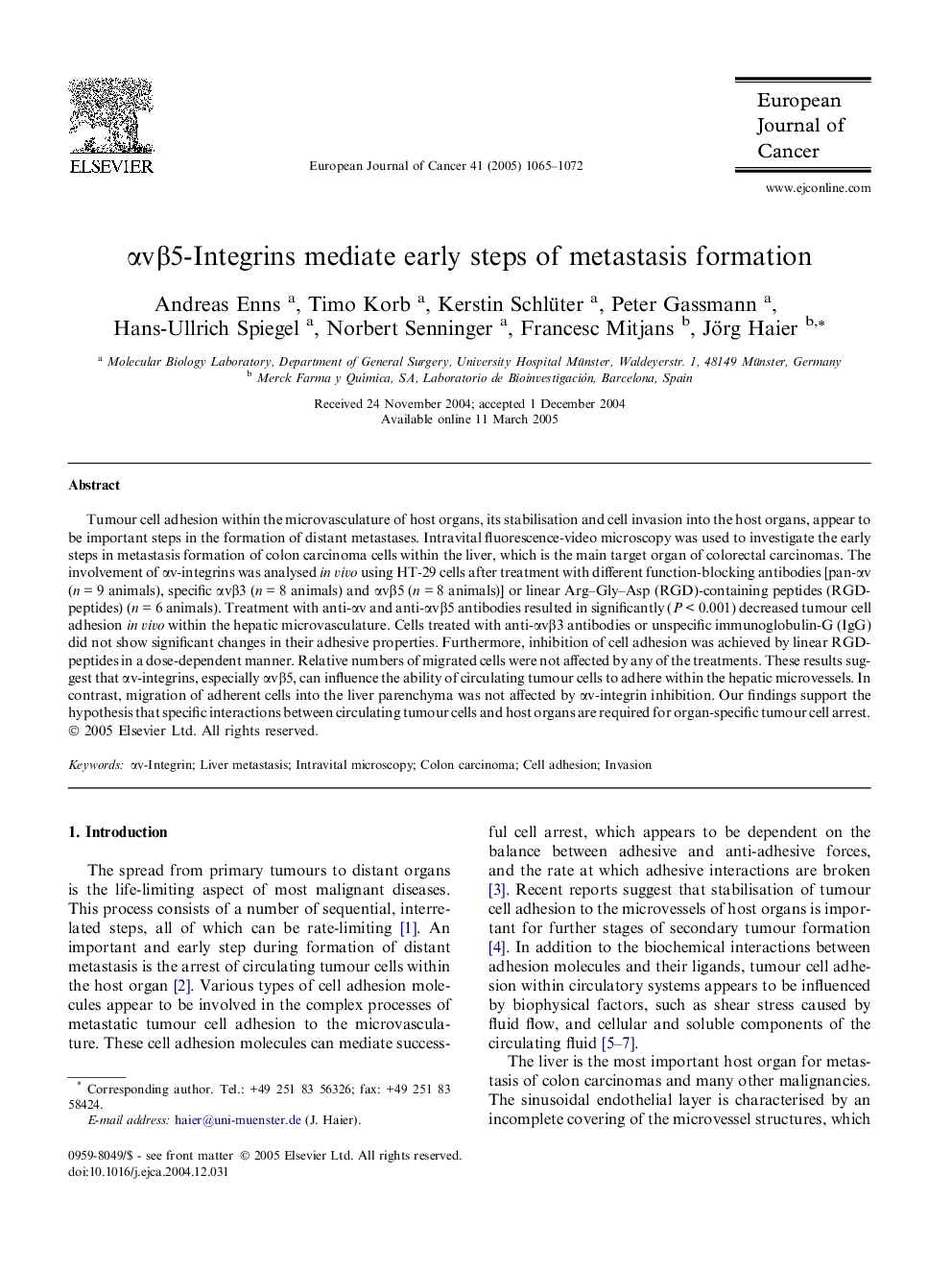| Article ID | Journal | Published Year | Pages | File Type |
|---|---|---|---|---|
| 9905814 | European Journal of Cancer | 2005 | 8 Pages |
Abstract
Tumour cell adhesion within the microvasculature of host organs, its stabilisation and cell invasion into the host organs, appear to be important steps in the formation of distant metastases. Intravital fluorescence-video microscopy was used to investigate the early steps in metastasis formation of colon carcinoma cells within the liver, which is the main target organ of colorectal carcinomas. The involvement of αv-integrins was analysed in vivo using HT-29 cells after treatment with different function-blocking antibodies [pan-αv (n = 9 animals), specific αvβ3 (n = 8 animals) and αvβ5 (n = 8 animals)] or linear Arg-Gly-Asp (RGD)-containing peptides (RGD-peptides) (n = 6 animals). Treatment with anti-αv and anti-αvβ5 antibodies resulted in significantly (P < 0.001) decreased tumour cell adhesion in vivo within the hepatic microvasculature. Cells treated with anti-αvβ3 antibodies or unspecific immunoglobulin-G (IgG) did not show significant changes in their adhesive properties. Furthermore, inhibition of cell adhesion was achieved by linear RGD-peptides in a dose-dependent manner. Relative numbers of migrated cells were not affected by any of the treatments. These results suggest that αv-integrins, especially αvβ5, can influence the ability of circulating tumour cells to adhere within the hepatic microvessels. In contrast, migration of adherent cells into the liver parenchyma was not affected by αv-integrin inhibition. Our findings support the hypothesis that specific interactions between circulating tumour cells and host organs are required for organ-specific tumour cell arrest.
Related Topics
Life Sciences
Biochemistry, Genetics and Molecular Biology
Cancer Research
Authors
Andreas Enns, Timo Korb, Kerstin Schlüter, Peter Gassmann, Hans-Ullrich Spiegel, Norbert Senninger, Francesc Mitjans, Jörg Haier,
